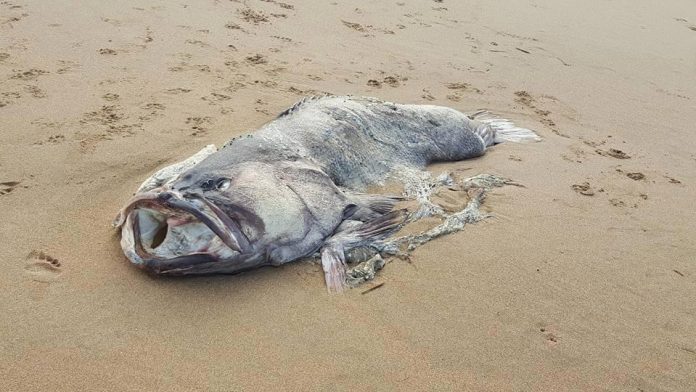A massive 6-foot-long fish washed up on a beach at Bundaberg in southern Queensland, Australia, confused and scared beachgoers leaving them clueless about what the creature was.
A few days ago, a couple came across a “monstrous” find while strolling around Moore Park Beach in Western Australia. The two noticed a big lump in the sand and went over to inspect it. That lump turned out to be a huge fish.
The couple posted the picture to a local community group on Facebook. As reported in the News Mail, the poor creature is likely a Queensland grouper, a large fish found in the reefs throughout most of the Indo-Pacific region. They are actually the largest bony fish found in coral reefs, and this makes the discovery at Moore Park Beach puzzling
“It would have to be 150 kilograms [330 pounds] – it was huge,” discoverer John Lindholm told News Mail. “I’ve never seen a fish that big before, let alone one that big wash up on the beach. What’s surprising is the fact that it is here, because there’s not a lot of reef close to this beach.”
He identified it as a groper, but some people in the local community facebook group suggested it may have been a tripletail. The Queensland Boating and Fisheries Patrol seem to agree with Lindholm’s assessment of the animal.
The fish was found halfway between the high and low tide mark, but Lindholm isn’t sure how it died. He thinks the fish may have reached the end of his life as he couldn’t see any clear signs of damage.
“How the fish came to be washed up on the beach and its cause of death also cannot be determined,” Queensland Boating and Fisheries Patrol District Officer Geoffrey Fergusson told News Mail. “The Queensland Groper is a no-take species. In Queensland, catching and possessing this fish is prohibited. If accidentally caught, protected species should not be removed from the water. They should be immediately and carefully returned to the water.”
While the specimen seen by Lindholm and his wife was certainly impressive, it was no record holder. Gropers, also known as giant groupers, can reach 2.7 meters (8.9 feet) in length and 400 kilograms (880 pounds) in weight. They feed on many different species, including young turtles and small sharks.
The groper is a protogynous hermaphrodite, which means that all its offspring are born female and some become male when few males are present. Due to overfishing, its population has plummeted in the last several decades and since the mid-90s it has been listed as vulnerable.
















Can I say something?